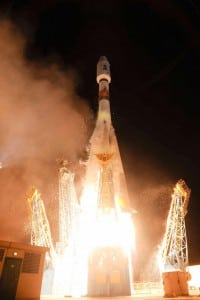Latest News
[Via Satellite 12-23-13] On Thursday, Dec. 19, 2013 at 6:12 a.m., local time in French Guiana, Arianespace successfully launched the ESA’s Gaia spacecraft using a Soyuz launch vehicle. Over its 5-year lifetime, Gaia is expected to produce an astronomical catalog of a billion stars, with extremely precise information on stellar distances, positions, and movements along with magnitude measurements in different bandwidths.
Through Gaia, scientists hope to clarify the structure, formation and evolution of our galaxy — the Milky Way — as well as making significant contributions to the knowledge of exoplanets, the solar system, other galaxies and fundamental physics. Gaia will generate a catalog 50 times larger than that provided by its predecessor, Hipparcos, launched by Arianespace for ESA in 1989.
Designed and built by Astrium, Gaia features two telescopes for observations in two different directions. Three major scientific instruments, which share a focal plane, analyze the light collected by these telescopes: an astrometric instrument to measure the angular position of stars, a spectrophotometer to determine their spectrum, and a high-resolution spectrometer to measure their radial velocity.
Get the latest Via Satellite news!
Subscribe Now